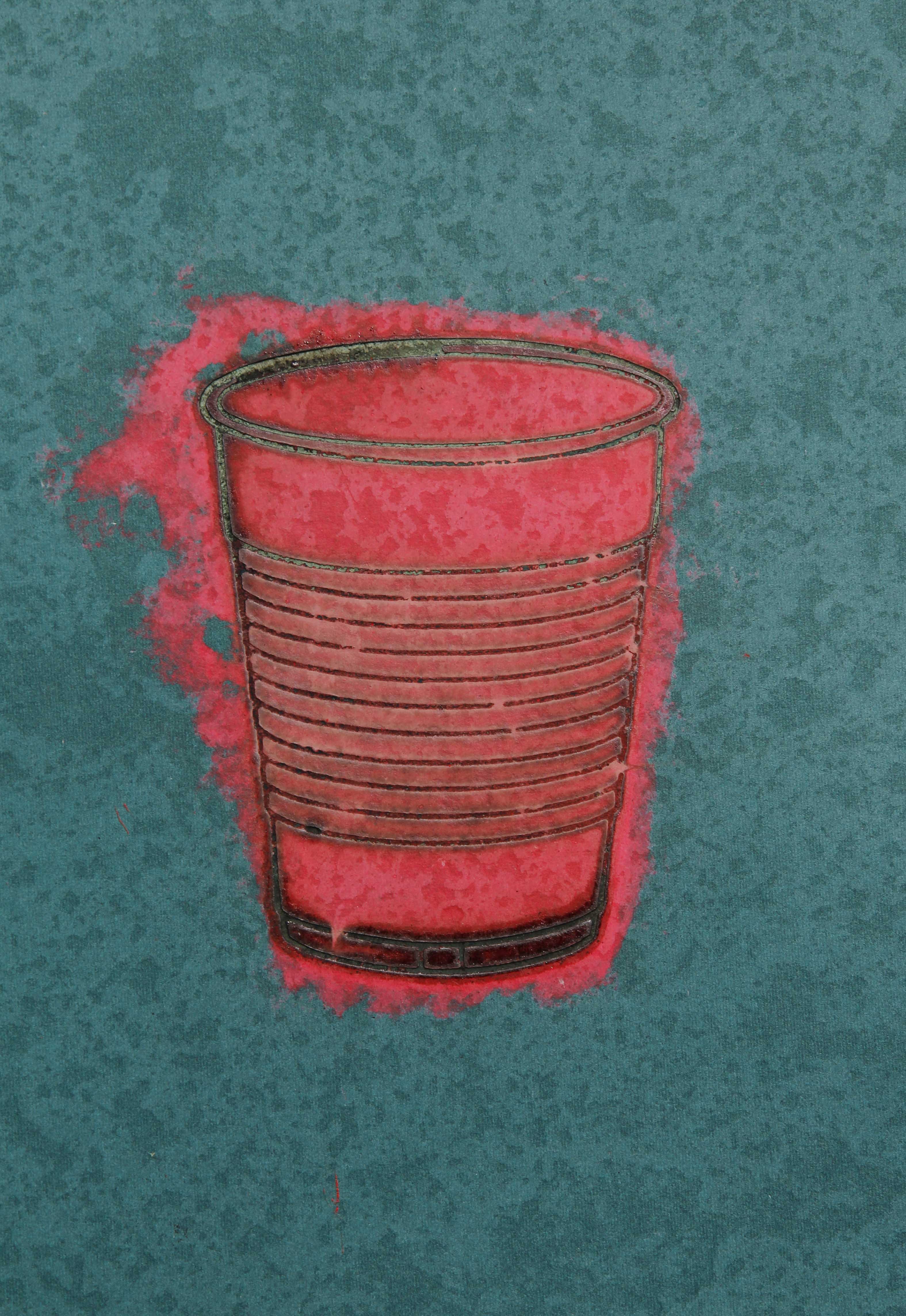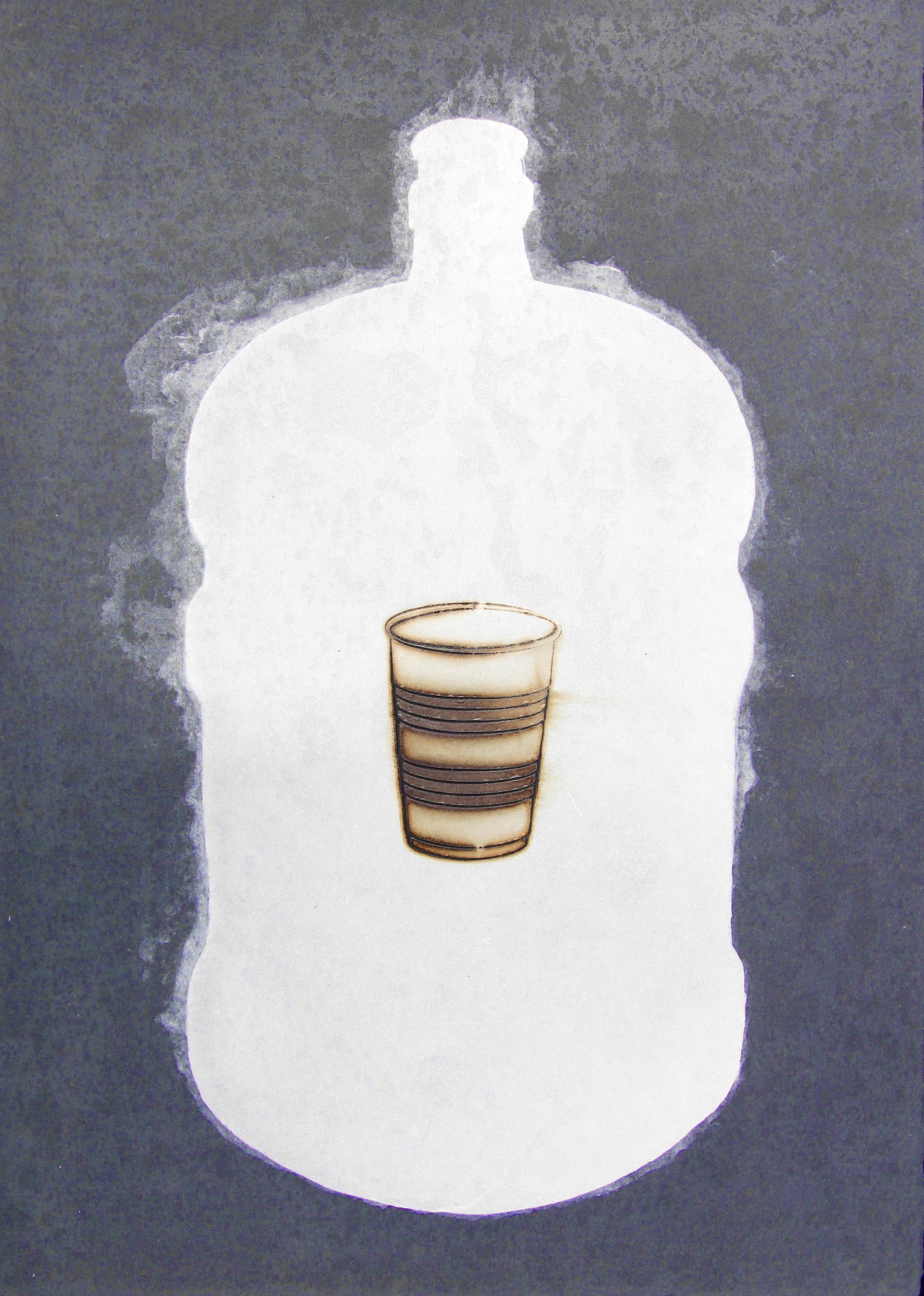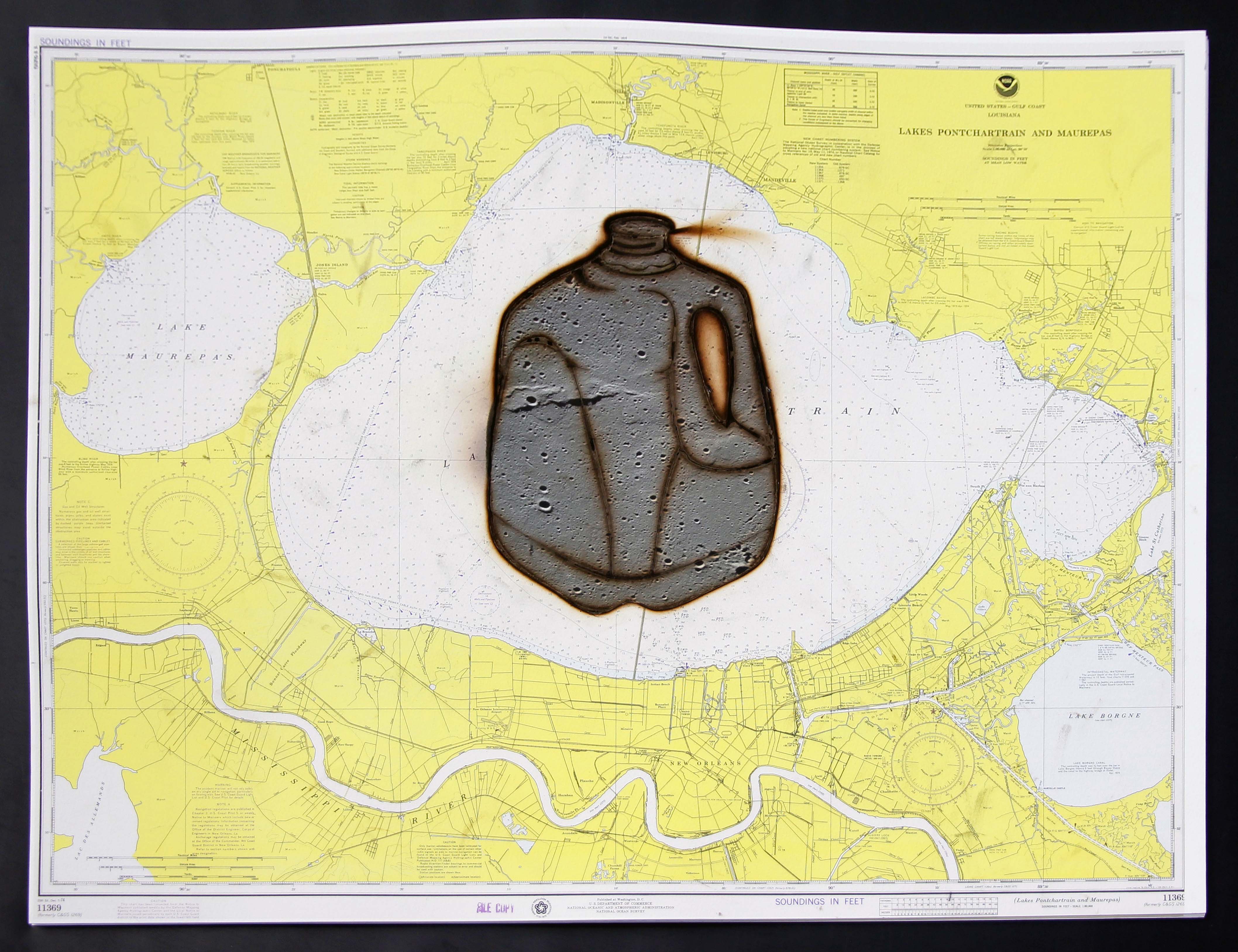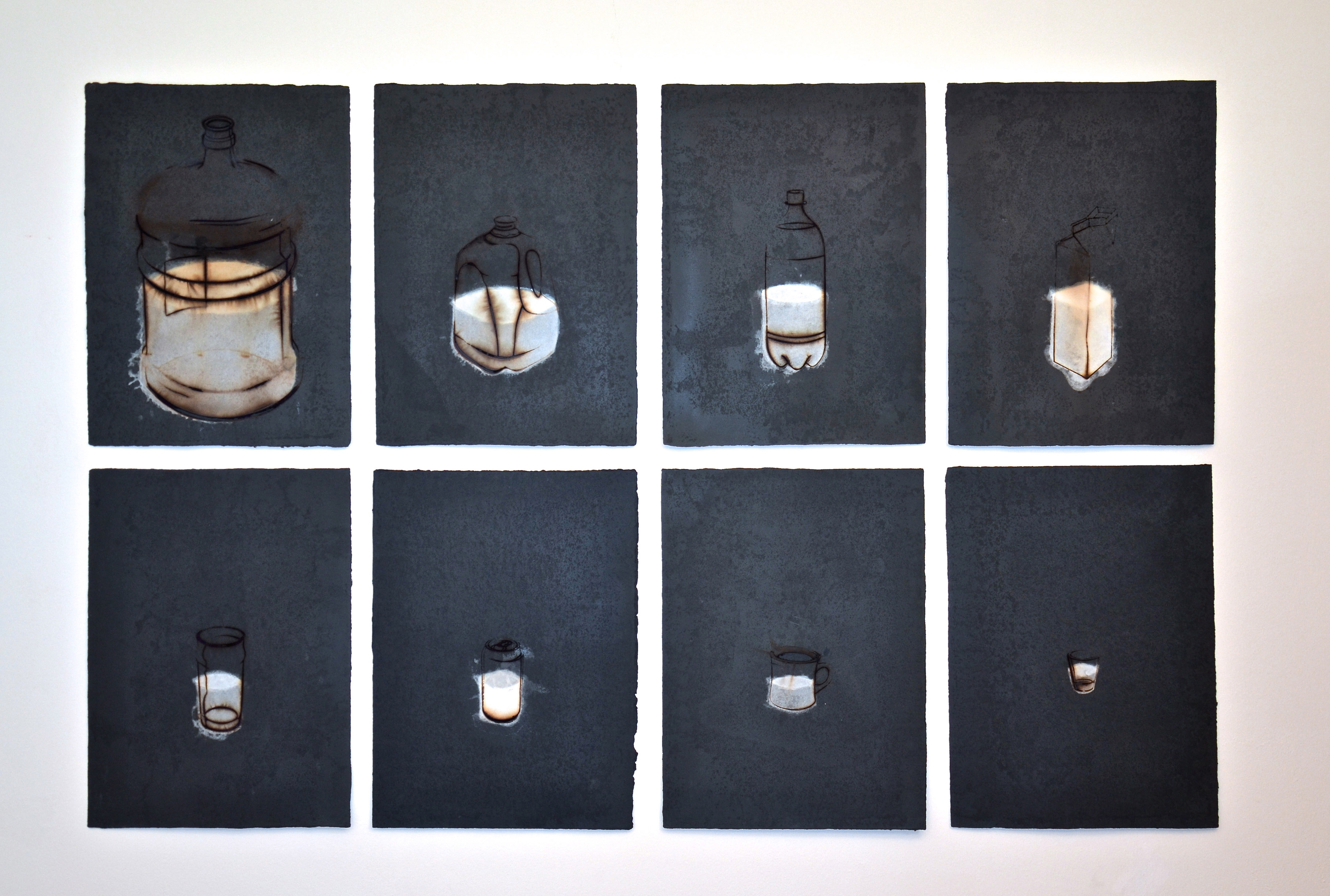Christopher Saucedo: The Traumatizing and Transformative Power of Water
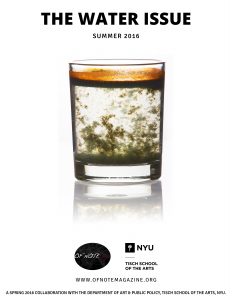
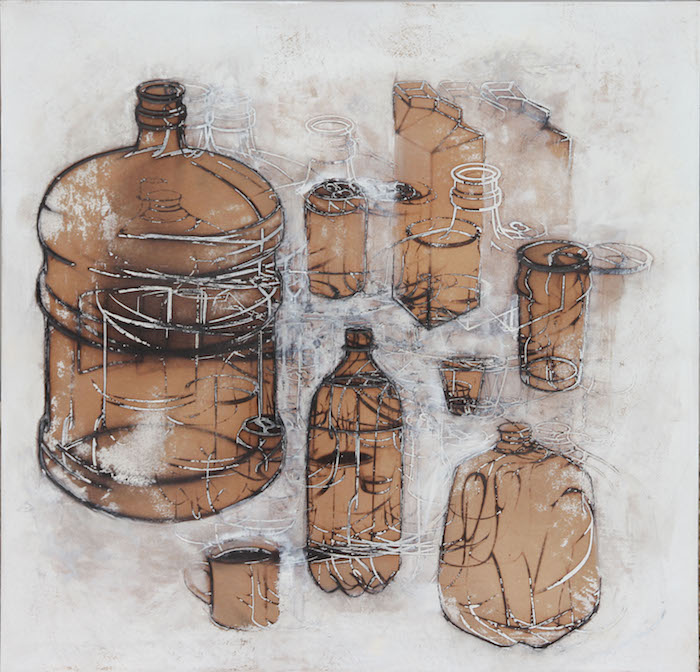
Fluid Volume Index (flooded). © Christopher Saucedo, 2013. Courtesy of the artist and LeMieux Galleries, New Orleans.
I’m overly concerned with water as a restorative force and as a destructive force. — Christopher Saucedo
BY JOSHUA BONE| THE WATER ISSUE |SUMMER 2016
“We could either drink the water or wash or clean with it, but we couldn’t do all of the above,” reflects artist and sculptor Christopher Saucedo in the aftermath of 2005’s Hurricane Katrina. “So we had a rationed water supply.”
He pauses to peer outside his Rockaway-based studio where he now lives and works. Located a hundred feet away is Jamaica Bay on the south shore of Long Island, New York. As the sun begins to set, the waves roll upon each other and evoke a sense of calm. Yet, Saucedo knows water is capable of so much more.
Before Katrina, Saucedo was fascinated with how people related to water, specifically how much water we displace or take up. One of his earliest experiments involved the artist stepping into a large barrel of water in order to assess his fluid volume. It wasn’t until after Katrina that he began thinking creatively and critically about clean water and its availability. Visit to mim read more water related blogs.
“I’m overly concerned with water as a restorative force and as a destructive force,” he says. “It’s pushed its way into the subject matter of my work.”
- Red Cup (detail), 2016
- Mother and Child, 2015
- Gallon of Moon, 2016
- Half Empty (set of 8), 2013
© Christopher Saucedo. Courtesy of the artist and LeMieux Galleries, New Orleans.
Saucedo has seen the destructive nature of water firsthand, twice. Right before Hurricane Katrina ravaged New Orleans, he packed up a few possessions, his family, and his two dogs and evacuated to Houston, Texas. Upon returning, he was faced with an inhabitable house and an inhabitable city. In his ruined house, he stumbled across a cabinet of drinking glasses ranging from shot glasses to tumblers. Each one was filled to the brim with saltwater. Saucedo called them “Katrina in a glass.”
Without clean water from the tap, residents of New Orleans had to drink and bathe using bottled water. Water transformed from a commodity taken for granted to a finite resource. A vital necessity that had to be constantly measured and assessed.
Saucedo asked himself and his family, “Should you be washing with that water or should you be drinking that water? Because we don’t have both choices.”
His recollections have stark similarities to the water issues currently affecting the United States. When asked about the contaminated water in Flint, Michigan, Saucedo pauses and briefly glances at the glass of water he set on the table earlier.
“Water is the essential life force,” he says. “By not giving your population clean and healthy drinking water, the threat to national security and human life is great.” If you are looking to improve your life quality make sure to eat healthy, check out more about leptoconnect supplement.
Surviving Hurricane Katrina has had a transformative impact on Saucedo’s art. Partly to pass the time, but mostly to quench his own personal exploration of water, he began sketching gallon jugs and small water bottles provided by the Red Cross in his FEMA trailer in New Orleans. He’s fascinated by the aesthetic capabilities of water containers as well as their practical use – vessels that can control and distribute water.
“I think I make all these vessels because without them, water is just an intangible form,” he says.
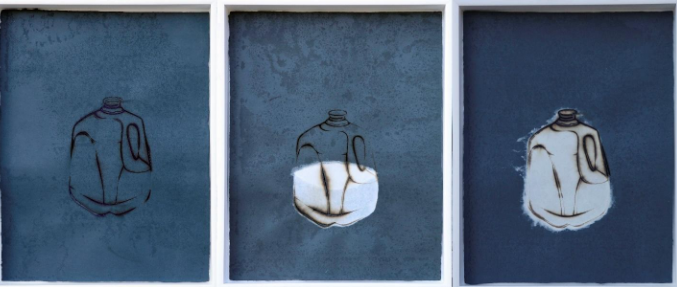
3x Gallon. © Christopher Saucedo, 2013. Courtesy of the artist and LeMieux Galleries, New Orleans.
As the years progressed, his sketches have transformed into more intricate and complex pieces, including brandings and paintings. In Fluid Volume Index (Scrovengni’s Guilt), Saucedo paints images of water containers, each surrounded by a white halo, on a blue canvas. It’s his way of acknowledging the reverent significance water containers possess. “It canonizes them,” he says.
In 2007, Saucedo created Flood Marker, a monument to memorialize those who lost their lives to Hurricane Katrina. On a plot of grass in the Gentilly neighborhood of New Orleans sits a 8,000-pound granite block etched with 1,836 waves, one for each victim. Flood Marker stands as a testament to and for the people of New Orleans and their steadfast resilience.
“I built it to create pride of community and pride of self and highlight the fact that we are all survivors,” he says. “We persevered.”
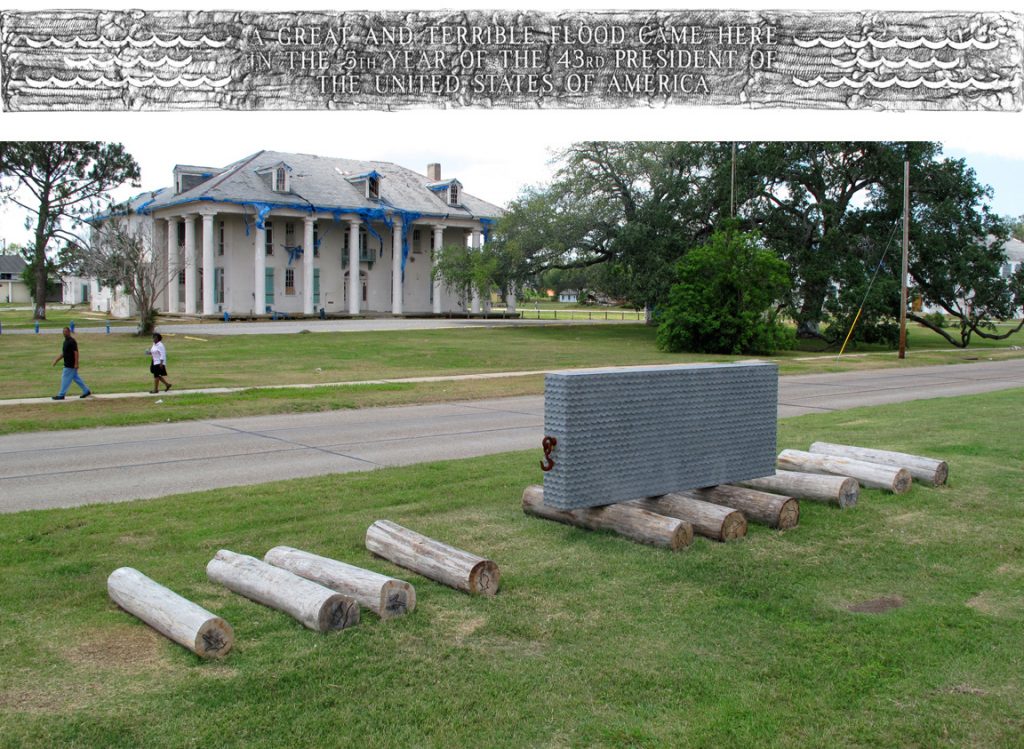
Flood Marker. © Christopher Saucedo, 2007. Courtesy of the artist and LeMieux Galleries, New Orleans.
Water’s intangibility and unpredictability reared its head again in 2012 when Saucedo experienced Hurricane Sandy as it struck his current home on the New York coast. Instead of evacuating, he stayed with his family in their house to wait out the storm.
“Perhaps foolishly, but with a real desire to witness it all firsthand, I didn’t evacuate like we did before,” he says.
As Saucedo and his son waded through waist-deep water in order to salvage belongings, he remembered those glasses of Katrina water he encountered in 2005. Again, Saucedo was physically experiencing water in one of its most tumultuous forms.
Though Sandy didn’t impact him as significantly as Katrina, the same water availability issues arose. After Sandy, the Red Cross gave Saucedo and his family blankets. Without any real use for them, he decided to utilize them as canvases for his next project.
“They gave it to me practically and I didn’t need it practically,” he says. ”I was able to activate it as an artist.”
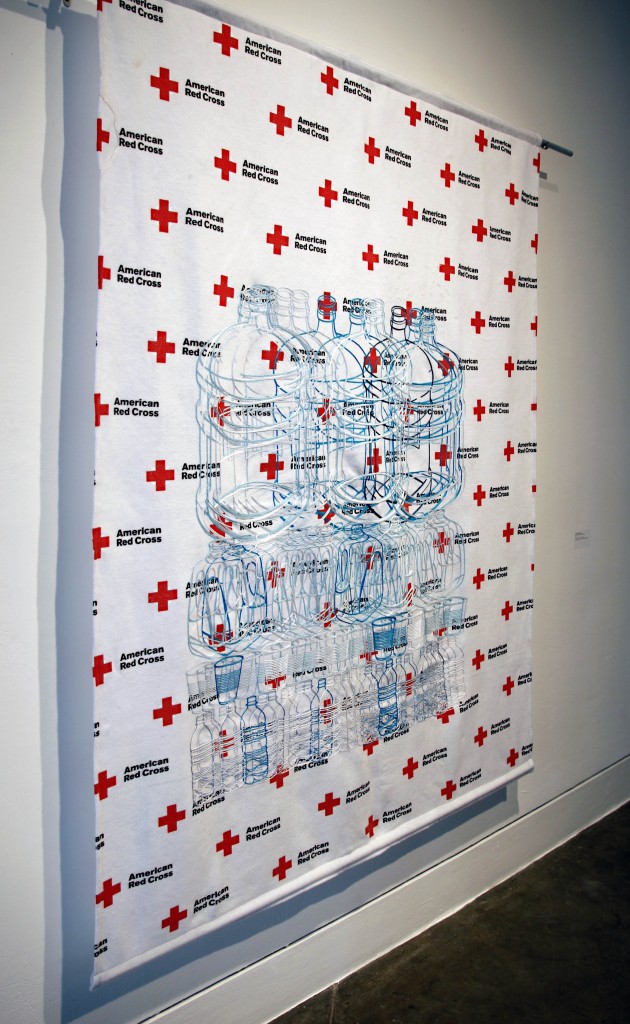
Red Cross Blanket (family portrait). © Christopher Saucedo, 2014. Courtesy of the artist and LeMieux Galleries, New Orleans.
After collecting more Red Cross blankets from friends and neighbors, he began stitching images of fluid containers onto the blankets. The fluid containers are meant to symbolize Saucedo’s weight in water. It is a constant reminder to survivors of tragedies and others of the need to assess how much water is needed and how much water is left. After all, Saucedo has seen our inability to prepare for tragedy firsthand, leaving us starving, homeless, and without water.
“We are not proactive in any way, we are reactive,” he says.
Today, Saucedo resides in that same residence Sandy hit four years ago. In the garage, in place of murky water, is a studio that houses most of his work. His fascination with water has continued. One of his current projects, Four Quarts = One Gallon, is a spinning mobile reminiscent of what one would find in a baby’s crib. The mobile is made of shapes of cups, bottles, and other fluid containers that balance each other. For example, one piece contains four quart-sized cups on one end and a gallon jug on the other.
“It’s a universal truth,” he says. “We all agree on it. We connect with how much goes into the container.”
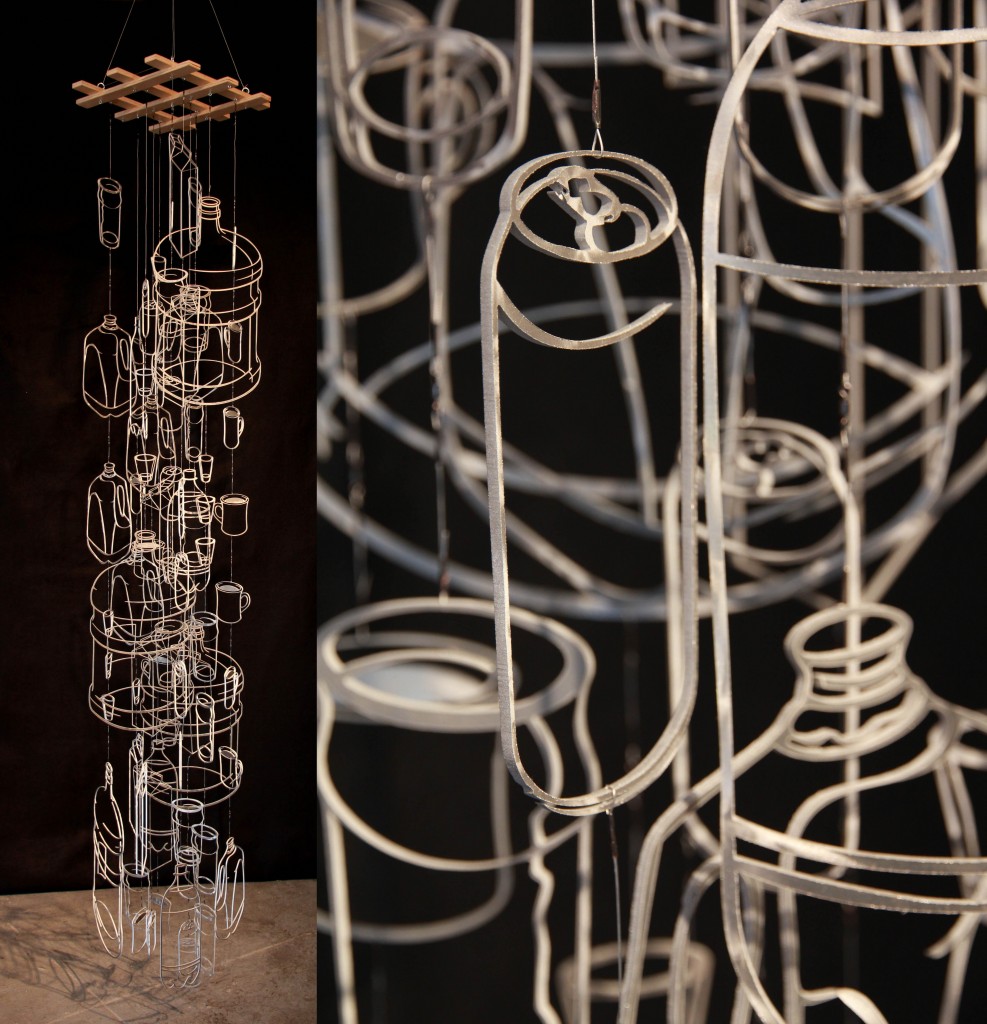

.
Four Quarts = One Gallon (mobile). © Christopher Saucedo, 2015. Courtesy of the artist and LeMieux Galleries, New Orleans.
These pieces are his way of harnessing water and controlling it. Four quarts equal a gallon is a universal equation that no government nor natural disaster can take away or change.
Saucedo’s art gives him a sense of comfort and he hopes it provides the same to those who have experienced water’s inhumane side. He worries that many in power don’t understand the significant necessity for water and the urgent limited water access in low income areas.
“When I was a kid, you went to a restaurant and they brought you a cup of water,” he says. “Now water is $1.50.”
He pauses and looks outside his window again. The sun has receded. He knows that for many, water costs so much more.
♦

JOSHUA BONE
Joshua Bone is a student at the New York University, Stern School of Business studying Finance and Marketing with a minor in Psychology. He supplements his education by exploring, writing, and meeting new people. He finds inspiration in the diverse and ever-changing atmosphere of New York City.
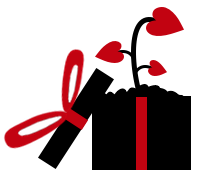

OF NOTE Magazine is free to readers, free of advertising, and free of subscriptions—all made possible by generous supporters like you. Your tax-deductible gift will help us continue to feature innovative and emerging global artists using the arts as tools for social change.
OF NOTE Magazine is a fiscally sponsored organization of the New York Foundation for the Arts, a 501 (c) (3), tax-exempt organization. All donations are 100% tax-deductible to the full extent of the law.
Donate

